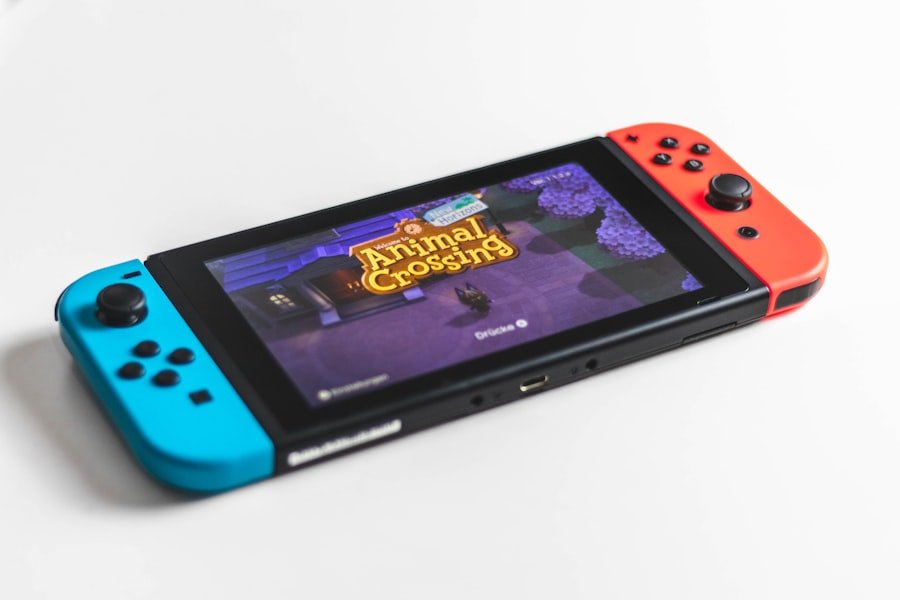Now Reading: The Rise of Cozy Games: Why Gamers Are Playing for Relaxation
-
01
The Rise of Cozy Games: Why Gamers Are Playing for Relaxation
The Rise of Cozy Games: Why Gamers Are Playing for Relaxation

In a world that often feels overwhelming, I find solace in the gentle embrace of cozy games. These delightful experiences offer a refuge from the chaos of daily life, allowing me to escape into serene environments where I can unwind and recharge. The appeal of cozy games lies in their ability to provide a sense of comfort and relaxation, often through simple mechanics and charming aesthetics.
Whether it’s tending to a virtual garden, exploring a quaint village, or crafting items at my own pace, these games create a safe space where I can let go of my worries and immerse myself in a world that feels warm and inviting. The soothing soundtracks and visually pleasing graphics further enhance the experience, wrapping me in a cocoon of tranquility. Unlike more intense gaming experiences that can leave me feeling drained or anxious, cozy games prioritize relaxation and enjoyment.
They encourage me to take my time, savoring each moment without the pressure of competition or high-stakes challenges. This unique approach to gameplay not only helps me unwind but also fosters a sense of accomplishment as I complete small tasks and watch my virtual world flourish. In this way, cozy games serve as a gentle reminder that sometimes, the most fulfilling experiences come from simplicity and mindfulness.
The Growing Trend of Cozy Games in the Gaming Industry
As I delve deeper into the gaming landscape, I can’t help but notice the burgeoning trend of cozy games gaining traction among players and developers alike. This shift reflects a broader cultural movement towards prioritizing mental well-being and self-care. More and more game developers are recognizing the demand for experiences that promote relaxation and joy rather than stress and competition.
The rise of indie studios has played a significant role in this trend, as they often have the freedom to explore innovative concepts that resonate with players seeking comfort. The success of titles like “Stardew Valley,” “Animal Crossing,” and “Spiritfarer” has paved the way for a new wave of cozy games that prioritize storytelling, creativity, and community. These games often feature charming art styles, engaging narratives, and gameplay mechanics that encourage exploration and creativity.
As I explore these titles, I find myself drawn to their heartwarming stories and relatable characters, which create an emotional connection that is often missing in more traditional gaming experiences. This growing trend not only highlights the changing preferences of gamers but also signals a shift in the industry towards more inclusive and diverse gaming experiences.
How Cozy Games Differ from Traditional Video Games

Cozy games stand apart from traditional video games in several key ways that resonate with my gaming preferences. One of the most significant differences is their focus on non-competitive gameplay. While traditional games often emphasize skill-based challenges, high scores, or multiplayer competition, cozy games invite me to engage at my own pace without the pressure to perform.
This shift allows me to enjoy the experience for what it is rather than striving for an elusive victory or ranking. Another distinguishing feature is the emphasis on exploration and creativity over conflict. In cozy games, I am encouraged to express myself through various activities such as farming, crafting, or building relationships with characters.
The absence of combat or high-stakes scenarios creates an environment where I can focus on personal growth and creativity rather than survival or competition. This approach fosters a sense of agency and fulfillment as I shape my virtual world according to my desires, making each gaming session feel like a personal journey rather than a race against time.
The Impact of Cozy Games on Mental Health and Well-being
The impact of cozy games on mental health and well-being cannot be overstated. As I engage with these gentle experiences, I often find myself feeling more relaxed and centered. Research has shown that playing video games can have therapeutic benefits, particularly when it comes to reducing stress and anxiety.
Cozy games, with their calming aesthetics and low-pressure environments, amplify these benefits by providing a safe space for emotional expression and self-care. Moreover, cozy games often encourage mindfulness—a practice that has gained popularity in recent years for its mental health benefits. By immersing myself in these virtual worlds, I am reminded to slow down and appreciate the little things in life.
Whether it’s planting seeds in my garden or decorating my virtual home, these activities promote a sense of presence that can be incredibly grounding. As I navigate through challenges in my real life, I find that the lessons learned in cozy games—such as patience, resilience, and creativity—translate into my everyday experiences, enhancing my overall well-being.
The Rise of Cozy Game Communities and Online Forums
As I explore the world of cozy games, I’ve discovered a vibrant community of like-minded individuals who share my passion for these heartwarming experiences. Online forums and social media platforms have become hubs for fans to connect, share tips, and celebrate their favorite titles. This sense of community adds another layer of enjoyment to my gaming experience, as I can engage with others who appreciate the same soothing gameplay and charming narratives.
These communities often foster a spirit of inclusivity and support, where players can share their creations or seek advice without fear of judgment. I’ve found that discussing my favorite cozy games with others not only enhances my appreciation for them but also allows me to forge meaningful connections with fellow gamers. Whether it’s participating in fan art challenges or sharing screenshots of my virtual achievements, these interactions enrich my experience and remind me that I am part of something larger—a community that values joy, creativity, and relaxation.
The Future of Cozy Games and Their Role in the Gaming Landscape

Looking ahead, I am excited about the future of cozy games and their potential to shape the gaming landscape. As more developers recognize the demand for these experiences, I anticipate an influx of innovative titles that prioritize comfort and creativity. The success of cozy games has already inspired larger studios to explore this genre, leading to collaborations that blend traditional gaming elements with the soothing qualities of cozy gameplay.
Furthermore, as mental health awareness continues to grow, I believe cozy games will play an increasingly important role in promoting well-being among players. The gaming industry has the opportunity to embrace this trend by creating more inclusive spaces where players can find solace and connection through shared experiences. As I reflect on my own journey with cozy games, I am hopeful that they will continue to flourish, offering comfort and joy to those seeking respite from the demands of everyday life.
In conclusion, cozy games have carved out a unique niche within the gaming industry that resonates deeply with players like me who seek relaxation and connection. Their appeal lies in their ability to provide stress relief through gentle gameplay mechanics and charming aesthetics. As this trend continues to grow, I look forward to witnessing how cozy games will evolve and shape the future of gaming while fostering communities centered around joy and creativity.
If you’re interested in the latest updates on next-gen consoles, check out this article for all the details. It’s important to have the right equipment for gaming, so if you’re torn between a gaming laptop and a regular one, this article can help you make the best decision. And if you’re looking to improve your streaming setup without breaking the bank, be sure to read about the top budget microphone for streaming quality sound on a budget.



























